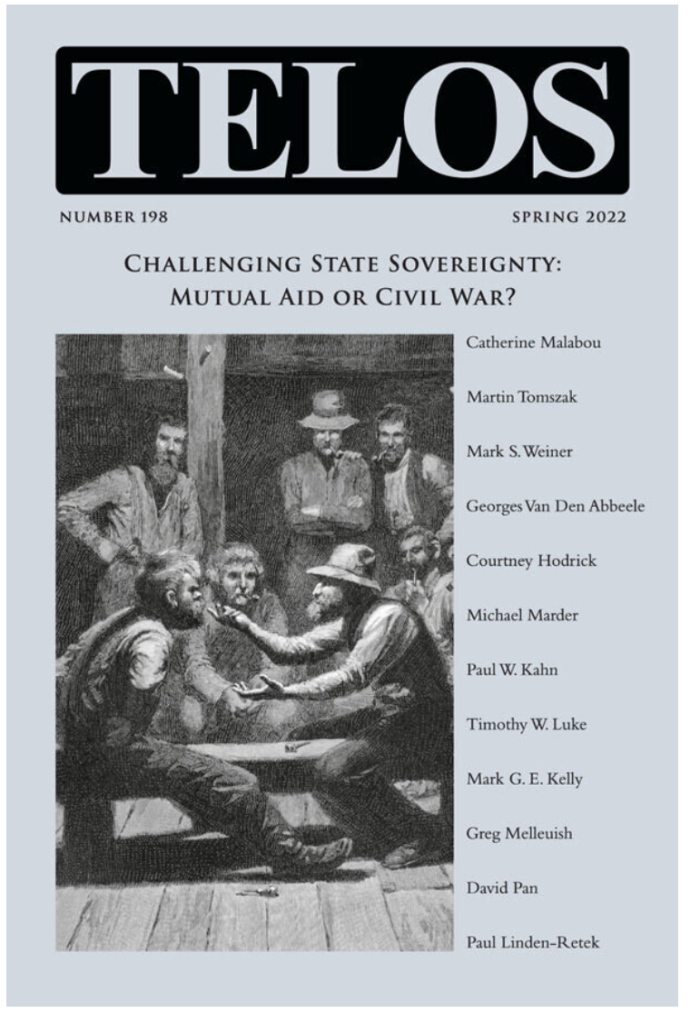My essay “Toward a Democratic Theory of Emergency Medical Services: Solidarity, Sovereignty, Temporality,” has been published in the most recent issue of Telos (Summer 2022). The theme of the issue is “Challenging State Sovereignty: Mutual Aid or Civil War?”
As I explain in my introduction:
“This essay considers whether a democratic theory of the routine work of medical first responders could help inform the development of a more robust culture of sovereignty in modern liberal democracies. The goal of such a theory would be to make liberalism better able to foster human flourishing and more likely to endure as a political form.
“The essay draws on three main intuitions. First, the local structures of Emergency Medical Services (EMS), especially volunteer ambulance corps as institutions of community solidarity and mutual aid, can form the basis of an emancipatory biopolitics. EMS thereby offers a means to activate democratic self-governance more broadly. Second, medical first-responder protocols and practices have the potential to resonate symbolically throughout civic life as quasi-ritual actions that could help root the friend-enemy distinction at the heart of political community less in the identification of enmity and more in the cultivation of pluralistic amity and the exercise of care across lines of class and ethnic difference. This effort would aim not to suppress politics in the interest of humanity as a whole but rather to clarify and deepen the political. Finally, and relatedly, employing EMS as a framework through which to shape civic life could help forge a more sustainable liberalism by placing it on the philosophical ground of human bodily and moral nature, especially the many ways in which as human beings we are subject to, and subjects in, time. EMS as a model for civic practice could strengthen liberalism by linking it to a lively apprehension of species-level truth.
“In building from these intuitions here, I seek to triangulate between insights that I have gained as a participant observer in EMS and a novice medic myself; the traditions of German phenomenology in which critical theory finds its roots, from which I take broad inspiration; and a close reading of a work of popular protest music from the late twentieth century, Public Enemy’s “911 is a Joke,” that obliquely yet trenchantly reveals the cultural structure underlying the status of emergency medicine as a political institution. The writing of Walt Whitman adds a brief fourth element that links “911 is a Joke” to an American tradition in which the subject of physical care and personal health serves as an Archimedean point of leverage for immanent political critique.”
Telos is available through academic libraries, through individual subscriptions, and (behind a paywall) on the journal’s website.
